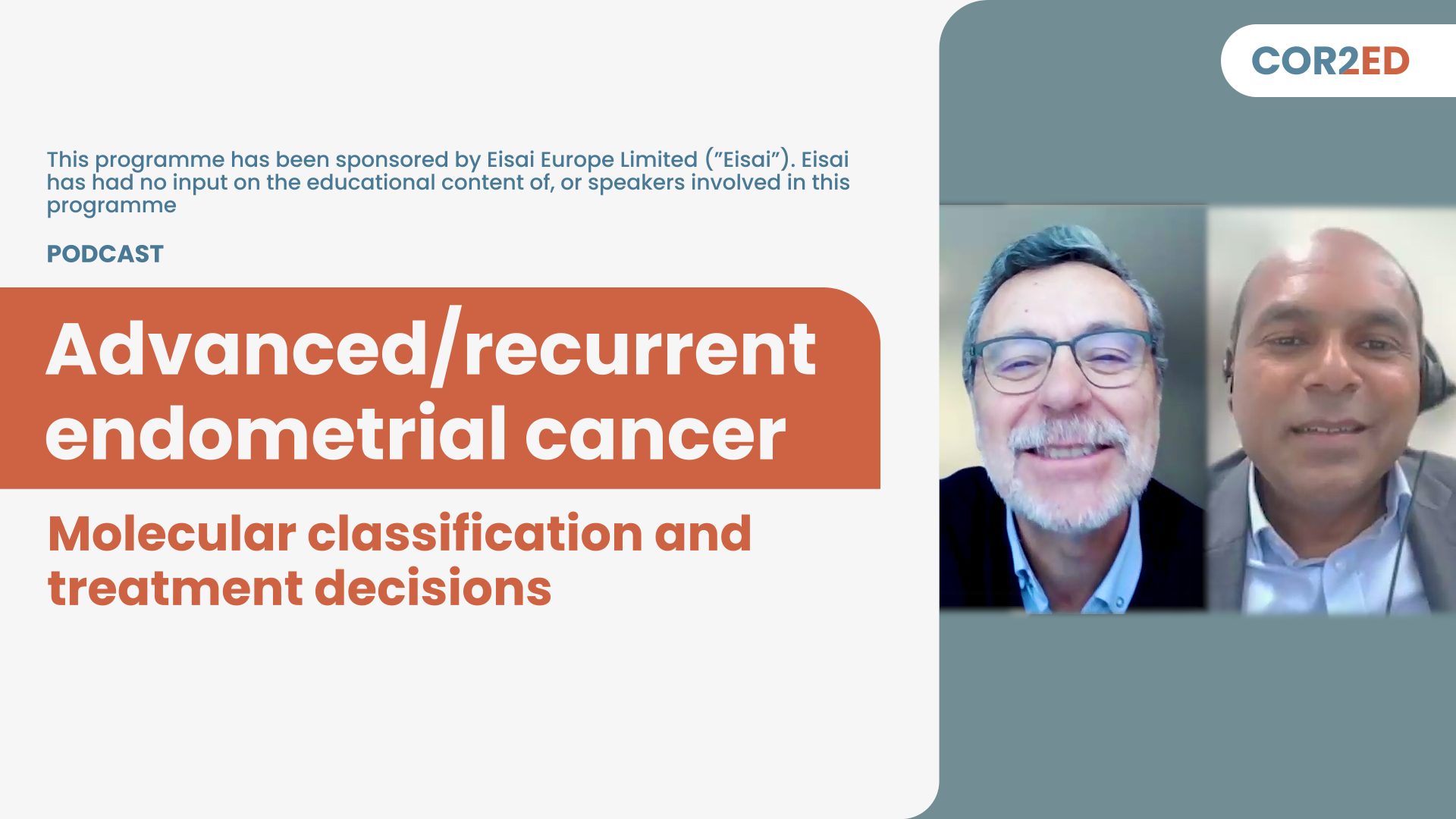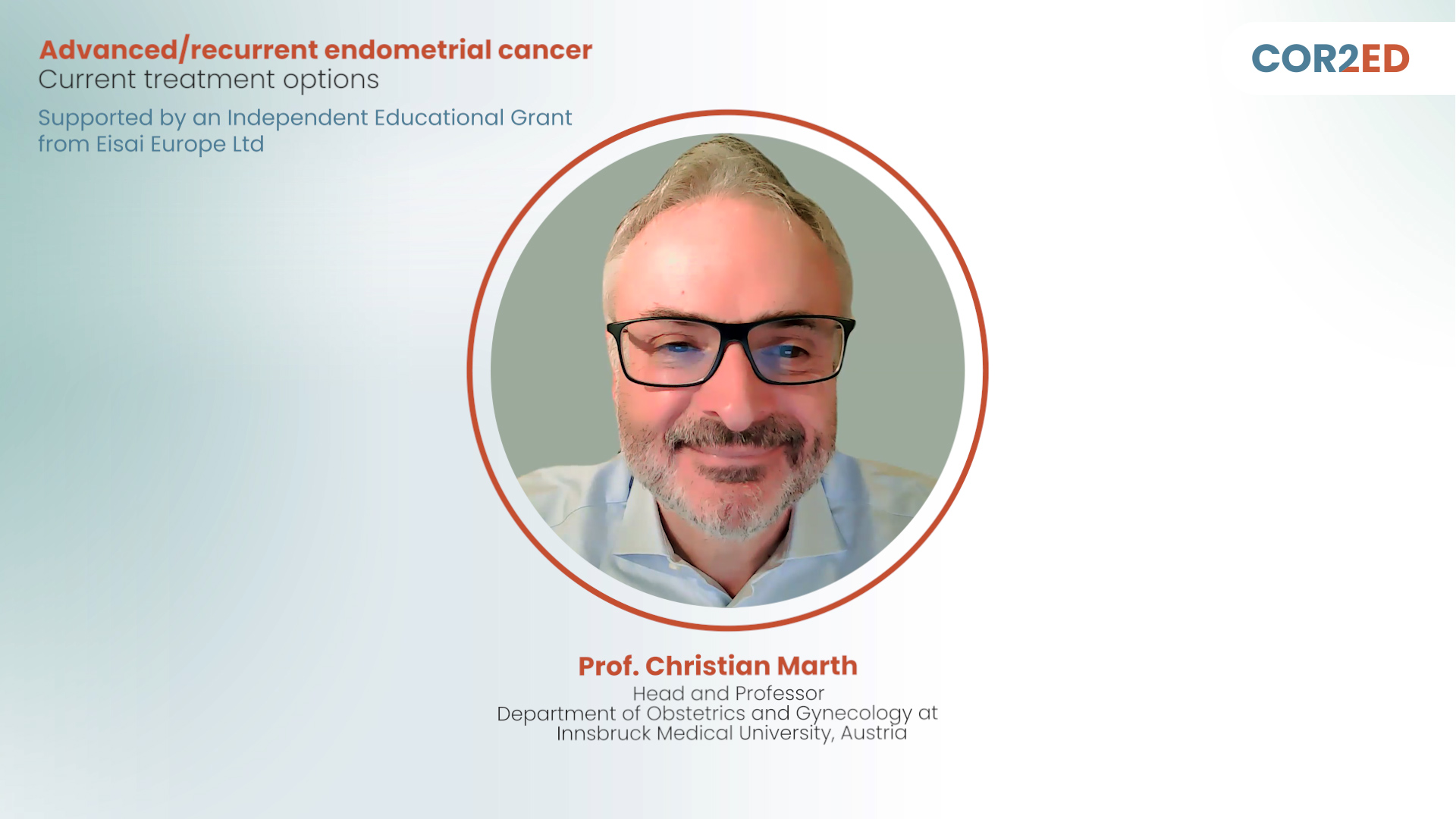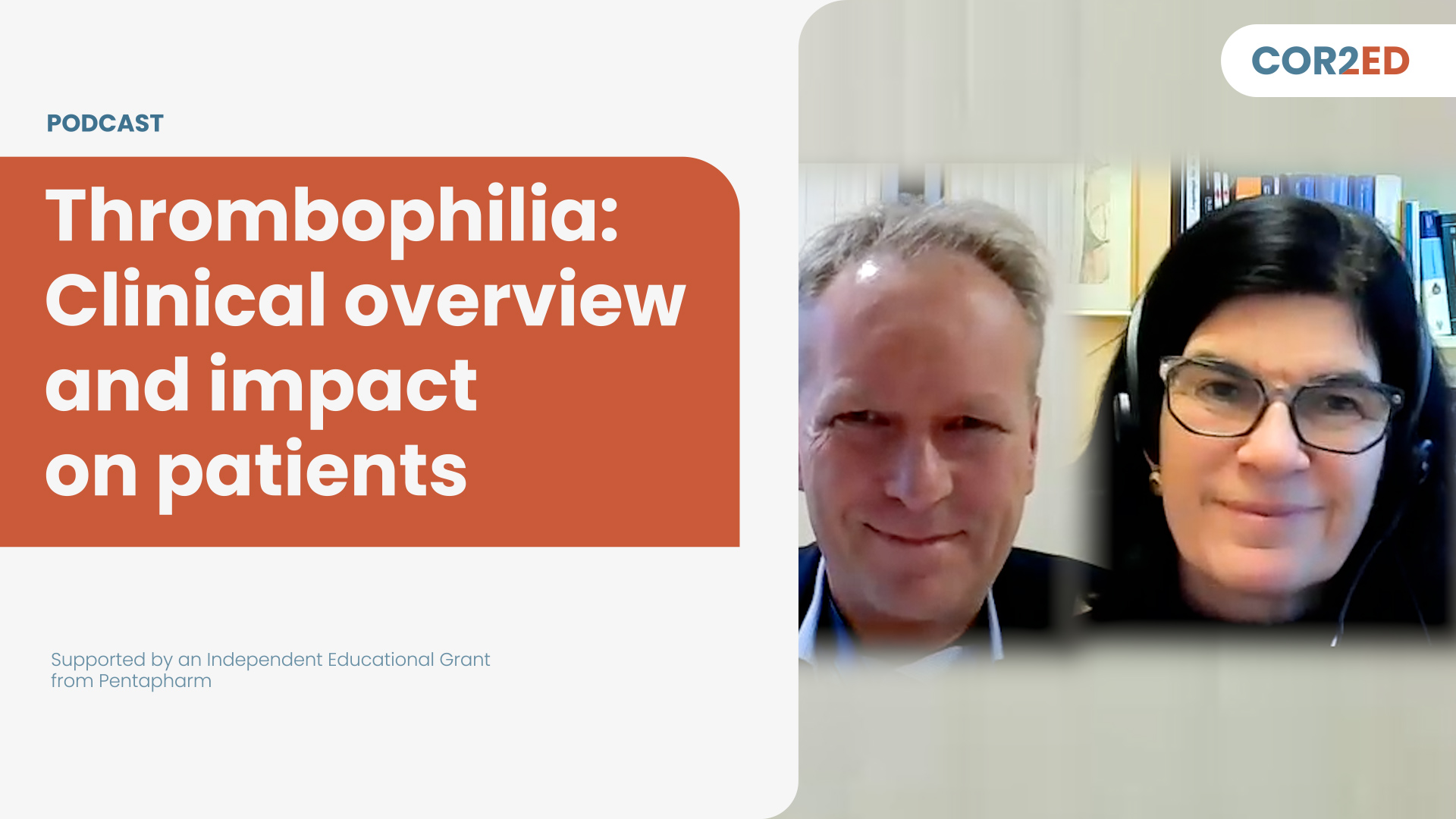Severe PPH – Definitions and Real-World Incidence
Brought to you by
Dr Homa K. Ahmadzia
Maternal-Fetal Medicine specialist and Assistant Professor in the Department of Obstetrics and Gynecology at George Washington University Hospital, USA
Dr Jarmila A. Zdanowicz
Senior Consultant in Obstetrics and Gynecology, Clinical Head Maternity Unit, Fellow in Feto-Maternal Medicine, Department of Obstetrics and Gynecology, Bern University Hospital, Switzerland
Please note:
OBSTETRICS & GYNECOLOGY CONNECT podcasts are designed to be heard. If you are able, we encourage you to listen to the audio, which includes emotion and emphasis that cannot be grasped from the words on the page. Transcripts are edited for readability. Please check the corresponding audio before quoting in print.
OBSTETRICS & GYNECOLOGY CONNECT is an initiative of COR2ED. This podcast is supported by an educational grant from Novo Nordisk. The views in this podcast are the personal opinions of the experts. They do not necessarily represent the views of the experts' organisation or the rest of the OBSTETRICS & GYNECOLOGY CONNECT group. For experts' disclosures on conflict of interest, please go to obstetrics & gynecology on www.COR2ED.com.
Tonke de Jong
Thank you for listening to this podcast on severe postpartum haemorrhage, also called PPH. I'm Tonke de Jong, and I'll be moderating this podcast from COR2ED Independent Medical Education. I am happy to welcome our two experts in the field of obstetrics and gynaecology. Could you please introduce yourself Dr. Ahmadzia?
Dr Ahmadzia
Hello, everyone. Thank you so much for having me. My name is Homa Ahmadzia, and I'm a maternal foetal medicine specialist at George Washington University. And I've been practicing for about eight years. I have both clinical and research interests in postpartum haemorrhage prevention and management.
Tonke de Jong
And why do you think this topic on PPH is important for our listener?
Dr Ahmadzia
So I think this topic is incredibly important. Besides the staggering statistic that every 6 minutes there's a maternal death from postpartum haemorrhage worldwide, that doesn't capture all the severe morbidity that occurs with postpartum haemorrhage. This can be as simple as severe fatigue, anaemia, depression postpartum, and not only affecting the mum, but also their immediate relatives and obviously future children.
Tonke de Jong
Thank you for the clear introduction. I'm delighted to also welcome Dr. Zdanowicz to this podcast. Welcome.
Dr Zdanowicz
Thank you very much for having me. My name is Jarmila Zdanowicz. I'm a senior consultant in obstetrics and gynaecology at the Bern University Hospital in Switzerland. I'm also a fellow in Feto-Maternal Medicine, and I'm also specialising my research in postpartum haemorrhage and patient blood management. And to me, this is a very important topic close at heart, because we still see so many women that are suffering from PPH. It's one of the main causes of maternal mortality, and it's something that we can, at least to some extent, prevent or at least prevent from going from bad to worse.
Tonke de Jong
Thank you, Dr Zdanowicz.
Tonke de Jong
Thank you. The first episode of this podcast series on severe PPH is all about setting the scene with definitions, real world incidence and how to diagnose PPH. I know that there's a lot going on these days in the field and before moving into specific details, I think it's important to understand how we define PPH. Perhaps we can start off by giving your definition of PPH and its cause Dr Zdanowicz?
Dr Zdanowicz
I think that's the very first important point that we have, because there are different definitions for PPH and severe PPH. According to the WHO, so the World Health Organization, PPH is a blood loss during childbirth of at least 500 millilitres or at least one litre for severe PPH, within 24 hours of delivery.
And at our clinic, though, we use a different definition. So, we use the definition of at least 500 millilitres after vaginal delivery and then also at least one litre during C-section. And then for a severe PPH, we usually use blood loss of about 1.5 litres. So, yes, it's different across the different societies and different countries.
Tonke de Jong
Yes, I'm wondering then if you use the same definition Dr Ahmadzia?
Dr Ahmadzia
The definition that we use is greater than or equal to more than one litre of blood loss within 24 hours of delivery. This change was made by the American College of OB-GYN last 5 to 7 years, and since then, we've primarily used this definition.
Tonke de Jong
Thank you. I was wondering if you could maybe elaborate on the potential consequences when PPH is not treated correctly Dr. Ahmadzia?
Dr Ahmadzia
Postpartum haemorrhage is something that affects so many women, and so it's incredibly important thing that we need to pay close attention to, and in terms of when it's not treated properly, I think often the underlying issue can be delays to diagnosis. I think a delay, whether it's because not enough staff or potentially not enough therapies or medications nearby, those are sometimes contributed to it or sometimes the patient needs to be referred to an outside treating hospital as well. And I think if these are encountered, often what can happen is you can have more, what we call coagulopathies or complications with the bleeding that require additional blood transfusion or end organ damage like kidney failure or other complications.
Tonke de Jong
So, there are a number of different specialties involved in treating PPH? It usually occurs in an emergency setting? How do you deal with these factors Dr Zdanowicz?
Dr Zdanowicz
I think, well, if we start easily with the PPH, so if we just have a blood loss of 500 millilitres that we're just getting started, so to speak, then we have the midwife, we have physicians, obstetricians, and then as the blood loss progresses, then we do involve, emergency physicians, meaning all kinds of specialties, anaesthesiologists, and then also interventionalists, you know, so as the severity progresses, then we also have to involve more specialties.
And I think, as Homa was saying, that it's so important to be aware, to diagnose it correctly and also early on because the later you diagnose it, the more you delay treatment, the more you run into problems and the more specialties you have involved. So, you know, that's one very important factor of treatment of PPH, that you're in touch before with the different specialties that you know who to get in touch with for treatment. And then you're also aware that it can happen. And I think that's one of the most important topics or key points of this podcast. As Homa was saying, it's still a very, very much part of our clinical life and it's still very much something that we need to pay close attention to.
Tonke de Jong
Yes, thank you. So, it's a lot about good communication, if I understand correctly?
Dr Zdanowicz
Absolutely.
Tonke de Jong
Well, thank you both for this clear explanation on the definition of PPH and also how to deal with it. I would like to continue our discussion on the real-world incidents of PPH. As I know, each year about 14 million women experience PPH, resulting in about 70,000 maternal deaths globally. But I know that the incidence differs quite a lot amongst high resource and low resource countries. Dr Zdanowicz could you perhaps tell us more about the incidence in high resource countries from the literature and also about your first impression of these numbers considering your own clinic?
Dr Zdanowicz
So, if you look at the numbers in the high resource countries, as you were saying, it's anywhere between 5 to maybe 15%, which is still I think quite high considering that we have all the resources at our fingertips. And I think in our clinic we fit more or less in that range, it's probably around 12% that we had in the last year because we also see the incidence rising. You know, we see there's more factors contributing to PPH, to severe PPH despite having, all sorts of treatments and management available.
Tonke de Jong
And if we're now talking about low resourced countries, how do these numbers compare?
Dr Ahmadzia
So unfortunately, in low resource settings, this is the leading cause of maternal deaths. It is a much more serious problem where over 90% of the maternal deaths that I mentioned worldwide from postpartum haemorrhage are occurring in low resource settings and that has to do a little bit with obviously the infrastructure for the access to health care resources or personnel. We mentioned earlier that you need often teams of people, if someone becomes very acutely sick and those facilities, even if they are tertiary care, may not have all those team members readily on standby available. And the other factor for why I think in low resource settings this is much more of an issue is women globally have higher rates of anaemia and severe anaemia, and that is a huge risk factor for postpartum haemorrhage.
Tonke de Jong
Thank you. Dr Ahmadzia, do you agree on the differences Dr Zdanowicz?
Dr Zdanowicz
I totally agree, it's absolutely true, and I think anaemia is a very big issue. And I think that's also where patient blood management comes into play, you know, because we know that this is one of the causes and that we can have an impact upon, especially given that, as we said before, that we have an increase in risk factors for PPH. But at the same time, we know that there is so many women that don't have any obvious risk factors. So, if we try to look at every pregnant woman, as Homa was saying, like if she has anaemia or not, if there's something that we can modify, that we can already know from being pregnant, change to prevent it from happening. There are factors that we know we can have an impact upon.
Tonke de Jong
Dr Zdanowicz, why do you think we observe an increase of PPH in high resource countries?
Dr Zdanowicz
So, I think one of the main reasons is that risk factors for PPH are also increasing. So, we see an increase in women that had a previous C-section and those women sometimes also have an abnormal invasive placenta, so they have even more of a risk factor. We have older women that get pregnant with a higher risk for preeclampsia, which also increases the risks for PPH. We have more women that get pregnant through IVF, which also increases the risk for preeclampsia and placenta previa, which is one of the risk factors for PPH.
So, we see multiple reasons for an increase in risk factors, which then in turn again cause a higher incidence of PPH.
Tonke de Jong
I understand. Dr. Ahmadzia, do you agree with these risk factors and do you have anything to add?
Dr Ahmadzia
Yes, thank you for that question. I completely agree with you Jarmila. The patient population is changing in the last several decades in the United States. Older age is one that was mentioned. Obesity is another risk factor where most associations and literature do show that higher obesity status can increase the risk for postpartum haemorrhage. Additionally, I think the diverse patient population that we have in the United States, where we have a lot of sometimes immigrant population that may or may not have adequate access for baseline health care needs. And so, we have undiagnosed or not well treated morbidities that come into pregnancy and then tend to have more complications.
The other interesting thing is that we do have in the United States women who might have cardiac anomalies that were treated early on in childhood and then 10/20 years later, after the therapies and the surgeries became more common, are getting pregnant themselves. So sometimes we'll have women with valve replacements or complex heart conditions, and that is an added risk factor.
And then one other thing I think that may not be inherent to the patient population, but there is this trend towards a lower kind of trigger, I would say, to transfuse patients in the pregnant population. We've seen that there are higher rates of transfusion associated with postpartum haemorrhage in the United States from the CDC. The literature showing that now, I think that while blood transfusions are safe, there's additional risk factors to them for future pregnancy morbidity such as developing antibodies. And so those are added things, I think in high resource settings.
Tonke de Jong
Do you see the same in your clinic Dr Zdanowicz?
Dr Zdanowicz
I think with regard to blood transfusion, we actually have a lower trigger for transfusion. So, we actually transfuse less than we used to because we know that the risk factors associated with blood transfusion. So, we are more restrictive with its use. You know, it's again here paying attention to the clinic more so than to the pure lab values. And also, when we look at studies, one that we did actually for the trend in blood transfusions in Switzerland, we've seen that it's actually less transfusions over the past couple of years.
Tonke de Jong
Yes, thank you. Thank you both. I think it's super interesting listening to your discussion on the impact of low and high resource countries on the incidence of PPH. And in the next part of this podcast, I would like to focus on the diagnosis.
Health care providers diagnose PPH through visual and physical examinations, lab tests, and the clinical history of the patients. So, Dr. Zdanowicz, could you tell us more about the signs and the symptoms of PPH, please?
Dr Zdanowicz
So, I think one important thing is that we cannot focus too much on the blood loss itself, because we know that we tend to underestimate blood loss during delivery. If we don't have any collector bags, it's a more visual estimation than it's easy to underestimate the actual blood loss. So, I think we have to look at the clinical signs first, being tachycardia, being dizziness, being weakness. Also looking at the pulse of the blood pressure and then at the same time looking at the blood loss.
But I think it's a combination. I think that's also going back to the definition of PPH, why some countries or some obstetric societies have implemented clinical signs of haemodynamic instability as a definition for PPH more so than the actual qualitative and quantitative estimation.
Tonke de Jong
Do you share the same view, Dr Ahmadzia? Do you also look not only to the blood loss but also to these different factors?
Dr Ahmadzia
Yes, I couldn't agree more Jarmila. When you made that point about the absolute number, sometimes in some ways is a little bit arbitrary because a patient who's maybe four foot 11 and weighs 60 kilos or 50 kilos is going to have much less reserve, particularly if they're anaemic, right? If you have all those things added up, perhaps 500 or 300 blood loss might be enough to kind of tip her over to needing much more interventions, whereas a patient with a body mass index of 50 and no anaemia might have a blood loss of a litre and then starts showing signs of hypovolemia and complications.
Tonke de Jong
Yes. So, my question would be then how do you differentiate between non-severe and severe PPH? And also, what challenge does it bring in practice?
Dr Ahmadzia
It is challenging at times to correctly make this diagnosis. I think even for an experienced clinician in a high resource setting, I think you have to be prepared honestly in every delivery, even if a patient may not have risk factors, to kind of always have that in the back of your mind, you know, to constantly be watching. How is the blood loss accumulating? Are you accounting for all the blood loss? If you're in a C-section is there vaginal bleeding that maybe you're missing and not factoring in? If the patient starts to get low blood pressure or if anaesthetist gives them more medications, you have to be kind of always be prepared and then acting quickly. Honestly, to start with the early interventions, simple things initially like fluid resuscitation medications and then escalating up if you don't see response quickly.
Tonke de Jong
I understand. So, I think we touched upon this subject already, but I think for our listeners, Dr Zdanowicz, it would be very useful to have some sort of a summary of what measures can be used to diagnose PPH?
Dr Zdanowicz
Blood collector bags, for example, for measurement. And also, one of the questions would be do you use it for every delivery? So, this is also considering, going back to high resource, low resource countries, not very cost-effective way to measure blood loss. But of course, it's the most accurate. Then you have the pads that you use, the weighing of the pads. Obviously, when you're in the O.R., you have an automatic measurement system that tells you exactly how much you lost. So, these are the main the measurement options that you have.
Tonke de Jong
Dr. Ahmadzia, could you please describe which women are at risk for PPH and also how it is determined?
Dr Ahmadzia
Women for postpartum haemorrhage risk, we often use clinical parameters either their history of postpartum haemorrhage or three prior caesarean deliveries, for example, are some of them. And a lot of times health systems will use risk scores or algorithms to kind of help the clinical staff, whether it's nurses or physicians or physicians in training to alert the entire team. As we talked about earlier, communication is really important and that helps. For example, at our hospital, we use the Association of Women's Health and Obstetrics and Neonatal Nurses or A1 risk algorithm, and that's implemented in our what's called EMR, electronic medical record.
So, the nurse at the check in or intake will ask the questions and then assign like a star for red risk for high risk or yellow for kind of moderate risk and green for low risk. But it's very important that these can change during the course of the labour if additional things like a prolonged induction process or bleeding during labour happens, those are can increase or elevate the risk.
Having said all this, these risk algorithms are not perfect and they still can miss people. Up to 40% even of haemorrhages can be diagnosed in 'low risk' women. I know there's efforts being made in the literature to use machine learning and additional algorithms to enhance and improve this, which I think hopefully will help in the future. But I can't probably stress enough that even if someone is 'low risk', they still could have a haemorrhage. So, we should always be prepared.
Tonke de Jong
Always be prepared. And besides treatment, prevention is just as important considering the impact of PPH. Dr. Zdanowicz, how can we prevent PPH in specific cases? What can we do?
Dr Zdanowicz
So, I think as Homa was saying, I think we need every woman that comes into our clinic. We need to look at the risk factors. We need to, if they're anaemic, for example, as I was saying before, look at the patient blood management. If they've had previous surgeries and we know that there's a higher risk for abnormal invasive placenta, then we need to have a good look at the placenta. And at the end of the day, it's really just being aware, and being aware specifically that there is a risk, as Homa was saying at every delivery, and that, sometimes it doesn't matter how prepared we are, even if we have a high-risk classification, if we have managed the anaemia, there's still that risk. So, I think that's probably the most important. Think about it, you know, the awareness and for those cases that we can do something, do something but still be aware that it can still happen.
Tonke de Jong
Yes, thank you. I think that sounds really clear.
Dr Ahmadzia, I know you are working a lot on raising awareness around this topic. Could you please tell us more about what you do and how you do it?
Dr Ahmadzia
Sure. I'd love to tell you about that. Within the last few years at our institution, we started effort called UNITE GLOBE, which stands for United Efforts to Reduce global obstetric haemorrhage. And it's really meant for a cross collaboration between providers, other stakeholders in the field of either development or policy and education to help include content around either prevention or treatment of postpartum haemorrhage. And so, we have a newsletter that we administer about every three months with the latest in the clinical trials research or events and meetings around postpartum haemorrhage. And as well as a virtual Zoom where we have speakers on the topic of either prevention or treatment of postpartum haemorrhage from all over the world. So, it's something that I hope can build bridges between different countries and providers, as I mentioned, in different specialties to really improve the reduction of this severe morbidity and mortality.
Tonke de Jong
Thank you, Dr Ahmadzia, for sharing this initiative with us; I think it’s great to hear about experts exchanging knowledge and ideas around the world.
As we are approaching the end of this podcast already, is there anything that you would like to share that we maybe did not cover during our discussion on PPH Dr Zdanowicz?
Dr Zdanowicz
Considering just, you know, management of PPH, prevention of PPH, these are very important issues obviously. But then we also need to look long term at the patient because there has also been literature and there have been studies showing that after PPH, the women still might have some mental health issues. They still might suffer from post-traumatic stress disorder.
So even after it, it's important, I think for every woman that we see with a PPH and obviously the more severe it is, the more acutely aware we have to be that later on we talk through what happened, because we've seen those women that for us, it seemed still a very part of our clinical routine. But I remember this one case where this woman, she was bleeding not very heavily. For us, it seemed a very manageable situation. But we were going to the O.R. she was telling me, 'I don't want to die. I don't want to die'. For me, it wasn't as dramatic of bleeding yet to when we are going to the O.R. and her husband was staying behind with the baby and obviously being very scared. So, I think it's important that even afterwards you talk through the family, the women, you know, that they understand what happened.
Tonke de Jong
Thank you so much for sharing this. Dr Ahmadzia, is there anything you would like to add to this story or maybe something else we missed in our podcast recording?
Dr Ahmadzia
So, I'd like to add a point about the prevention of postpartum haemorrhage. As Jarmila pointed out, iron deficiency anaemia and being very proactive with either oral therapy or if the patient is not responding, I.V. therapy. It's been really helpful; I know in our clinic patient population to improve iron stores and to essentially decrease that morbidity from anaemia at the time of delivery.
The second point was related to tranexamic acid. And I think here there's an interesting and evolving story with its role for prevention of postpartum haemorrhage. Just within the past month, we've had a lot of recent publications in the field of postpartum haemorrhage with respect to one is a multi-site large clinical trial looking at tranexamic acid. It did look at the time of cord clamp and its use. So, I do think in the future we should be looking at even giving it earlier because minutes can matter at the time of a postpartum haemorrhage if it's especially severe. And then the other trial that I think is important to consider is in low resource settings where they showed a cluster randomised trial using intravenous fluids and measurements of blood loss and tranexamic acid in uterotonics, as well as a couple of other things. And that showed huge reductions in morbidity.
And I think these trials are necessary and really should be continued to make significant change in this field. I think there's always a tendency to shy away from doing research in obstetrics because people are a little bit hesitant to consider the pregnant women and the foetus. But as long as the proper safeguards are there, that's the only way we're going to move forward and really make a huge impact in future outcomes and reduce morbidity and mortality.
Tonke de Jong
Thank you so much for adding these points. To conclude this podcast, because I think we can we can talk for hours actually, but we have to go to the closure. What would be your key clinical takeaways for our listeners, Dr Zdanowicz?
Dr Zdanowicz
I think it's just a summary of what we've said before. You know, it's basically to look at the risk factors for every woman. Be aware during delivery that this woman might have a PPH, and also usually each clinic has a, or most clinics have a PPH algorithm. So, know the algorithm, know where everything is, know who to call. And also, I think very important is know your limit. To call help early enough. If you see that it's still bleeding, you're doing all you can, know your limits call for help early.
Tonke de Jong
Would you have anything to add Dr Ahmadzia?
Dr Ahmadzia
I think those were great takeaway points Jarmila. I do agree with the quantification of blood loss as much as possible to help better with tracking of a haemorrhage. And every health system is different in their capacities do that. But I think often that this is important so that you're sort of not missing the haemorrhage and it's not something you find out an hour or so later and acting quickly as we said, minutes can matter and being proactive with iron therapy to help reduce the risk of iron deficiency anaemia as a contributor to haemorrhage.
And finally, maybe thinking about therapies early on or at least having them readily available so it doesn't take too long to administer if you decide to implement them.
Tonke de Jong
Thank you so much, Dr Ahmadzia and Dr Zdanowicz, for sharing your insights on a topic that you're both passionate about. I have learned a lot from your discussions, and I'm sure our listeners too, so thank you both.
If you liked this episode, then please look out for more episodes on PPH, including treatments for severe PPH, with a focus on learnings from clinical practice, controversies in the treatment of severe PPH and new developments in this area. If you're interested in finding out more about PPH, then please visit cor2ed.com and select obstetrics and gynaecology. If you like this podcast then don't forget to rate this episode or inform your colleagues about it. Thank you for listening and see you next time.




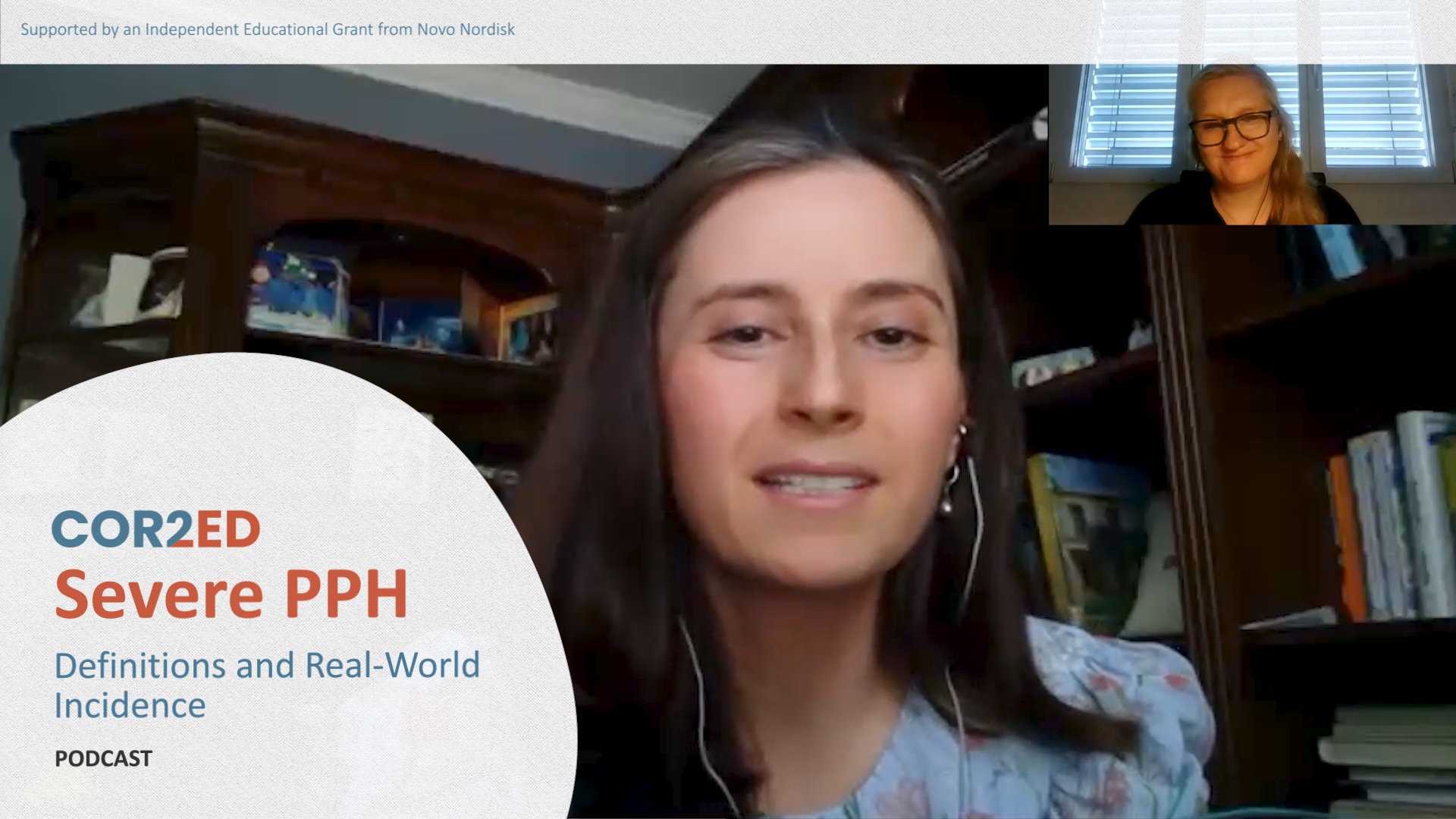

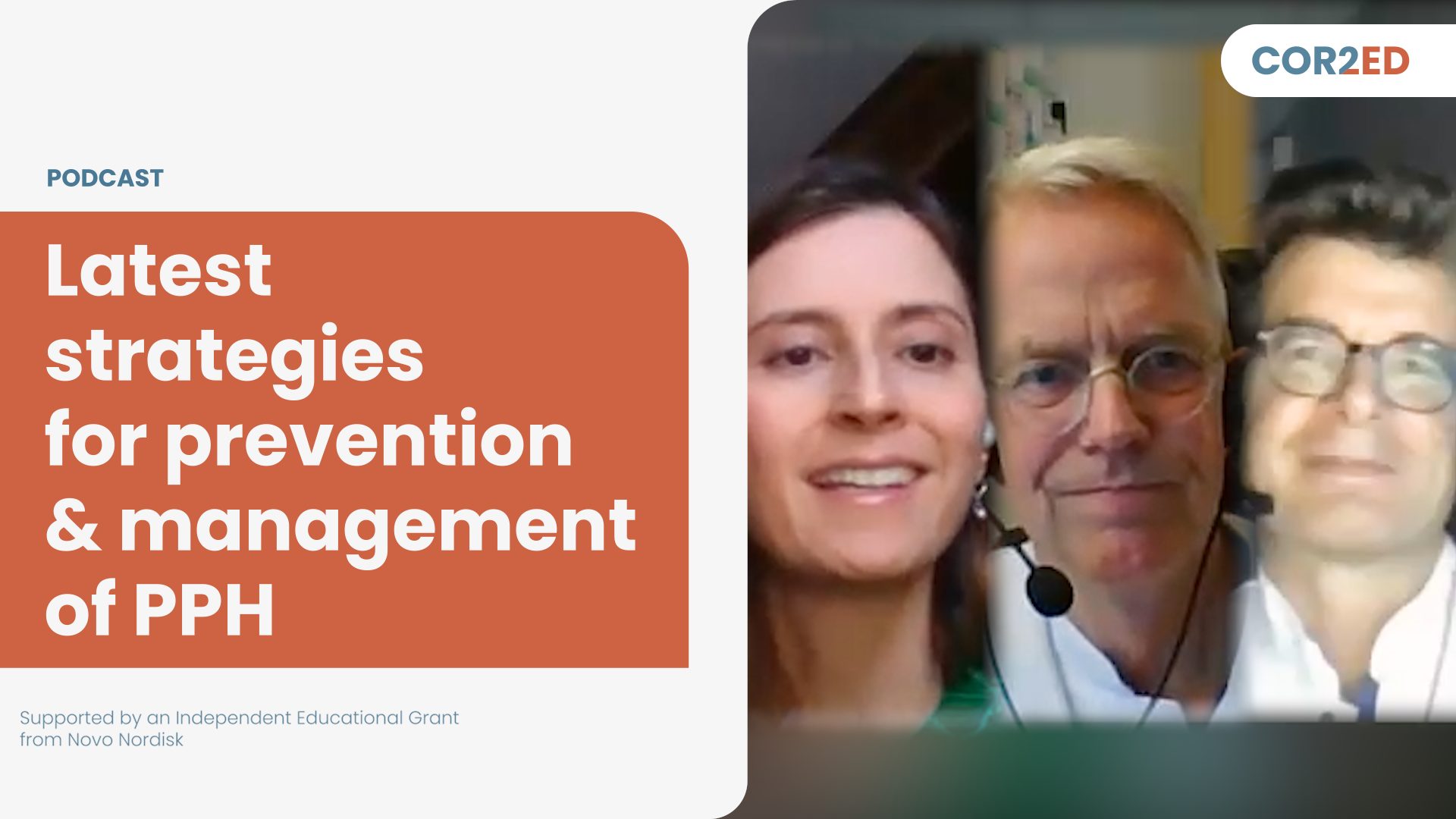



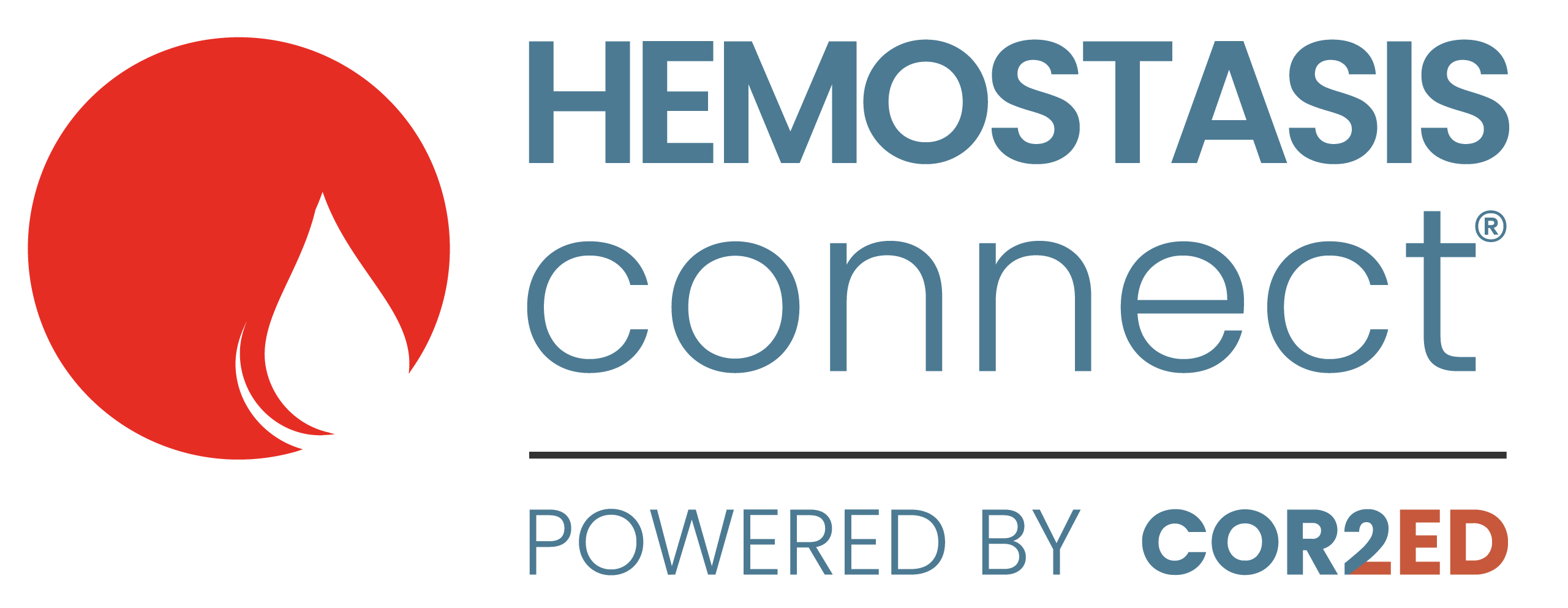


 Downloadable
Downloadable  6 MIN
6 MIN
 Dec 2025
Dec 2025 
